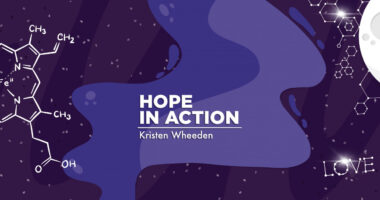Porphyria found in infant treated with UV light therapy for jaundice
Severe blistering that followed led to diagnosis of very rare disease form

An infant in Brazil who developed severe skin blistering after receiving a light-based therapy for jaundice, or yellowing of the skin, was found to have congenital erythropoietic porphyria (CEP) after a thorough diagnostic workup.
“In publishing this case report, we aimed to pediatricians’ knowledge regarding [CEP],” the researchers wrote. “Pediatricians must be aware of this disease and consider it as a differential diagnosis once a newborn starts presenting photosensitivity and blisters associated with red to brown urine on the diapers.”
The case was described in the report “Bullous lesions following phototherapy in a newborn,” published in the journal Einstein (Sao Paulo).
Photosensitivity to UV light is common across forms of porphyria
With fewer than 200 documented cases, CEP, also known as Günther disease, is the rarest type of porphyria. CEP is characterized by symptoms that are present from birth, and it’s usually caused by mutations in the UROS gene.
As in other forms of porphyria, photosensitivity — damage to the skin in response to light, particularly ultraviolet or UV light — is the disease’s main symptom.
Phototherapy is a form of light-based therapy that involves shining ultraviolet light on the skin. This can be very helpful for treating certain skin conditions, and it’s commonly used in newborns who have jaundice or yellowed skin, a sign of liver dysfunction. But for people with porphyria, it can trigger photosensitivity.
“The symptoms of photosensitivity are predominantly caused by visible light and ultraviolet wavelengths, similar to those used in phototherapy for treating neonatal jaundice,” the researchers wrote.
Researchers in Brazil described the case of a baby boy who had jaundice shortly after birth. The infant was treated with phototherapy, and unexpectedly, this led to the appearance of bullous (blistering) lesions across much of his body.
He was transferred to a specialty center, where a battery of diagnostic tests were performed. Tests of the baby’s urine revealed the presence of high levels of porphyrins — the molecules that characteristically build to toxic levels in CEP and other forms of porphyria.
Viewing the baby’s blood or urine under a Wood’s lamp, a type of lamp that emits purple or violet UV light, showed that these fluids lit up (fluoresced) in a bright red color, a telltale sign of porphyrin buildup.
Genetic testing then revealed the presence of mutations in the UROS gene, confirming the diagnosis of CEP.
The baby developed a bacterial infection during his time in the hospital, and the infection progressed to cause his death at 2 months of age.







